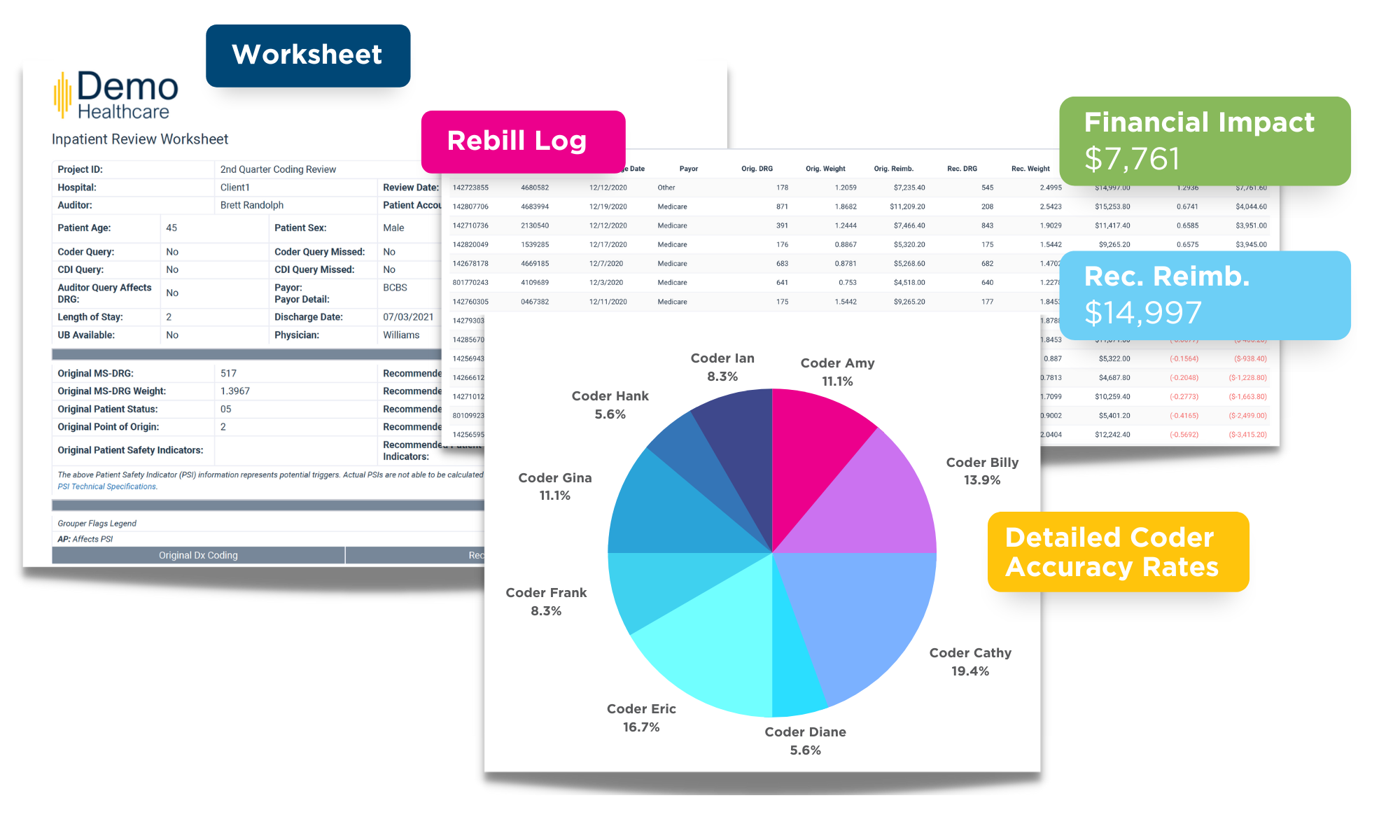May 30, 2023

If you're looking to move away from spreadsheets for your acute care audit reviews, you should consider utilizing a medical coding audit tool. First you will need to:
- Identify your requirements: Determine what specific features and functionalities you need for your audit reviews. Consider factors like import process, data entry, analysis, reporting capabilities, collaboration, and integration with other systems, etc.
- Explore different medical coding audit software options: Look for specialized audit management software designed for your organization. Consider factors like ease of use, scalability, security, data import/export capabilities, customizable templates, and solutions for all patient types within your organization.
- Request demos and trials: Reach out to software providers to request demos or trial versions of their products. This will allow you to assess the user interface, functionality, and compatibility with your workflow.
- Involve stakeholders: Involve key stakeholders, such as auditors, healthcare professionals, and IT personnel, in the decision-making process. Gather their feedback and ensure the chosen solution meets their needs as well.
- Data migration: If you have existing data in spreadsheets, consider the process of migrating that data to the new software. Look for tools or features within the software that facilitate data import and ensure data integrity during the transition.
- Training and implementation: Choose a software company that will assist with implementation and provide adequate training for your team members to ensure they understand the new system and its features. Develop an implementation plan to smoothly transition from spreadsheets to the new software.
- Gradual adoption: Consider a phased approach. his can help mitigate any potential disruptions and ensure a smoother transition.
- Monitor and optimize: Continuously monitor the effectiveness of the new system and gather feedback from users. Identify areas for improvement and communicate them with the software company.
- Data backup and security: Ensure that your chosen software offers robust data backup and security measures to protect sensitive patient information and comply with privacy regulations.
These steps will allow you to successfully transition away from spreadsheets to the successful implementation of a medical coding audit tool.
Atom Audit, HIA's own medical coding audit tool, provides clients with significantly more functionality than a spreadsheet or other antiquated manual processes. The easy-to-use and intuitive coding review application enables auditors to efficiently and effectively manage the entire audit lifecycle in one spot. Atom Audit supports Inpatient, Outpatient, Professional Fee, and Ambulatory Surgery all for one annual per auditor fee. Each module includes features for full coding validation and reporting.
Sneak peek at what we can offer:

Getting started is easy and requires minimal support from your IT organization. Our team will guide you through the onboarding process and ensure a successful implementation. Learn more and set up a demo today to see how it all works (pss - we also follow the 'gradual adoption' recommendation above, so you can try us out with no strings attached).
Subscribe to our Newsletter
Recent Blogs
Related blogs from Industry News , Medical Coding Tips
Ex utero intrapartum (EXIT) procedures presen...
This is a series of blogs about the importanc...
Facial feminization surgery includes a range ...
Complex coding scenarios often lead to delays...
Subscribe
to our Newsletter
Weekly medical coding tips and coding education delivered directly to your inbox.




